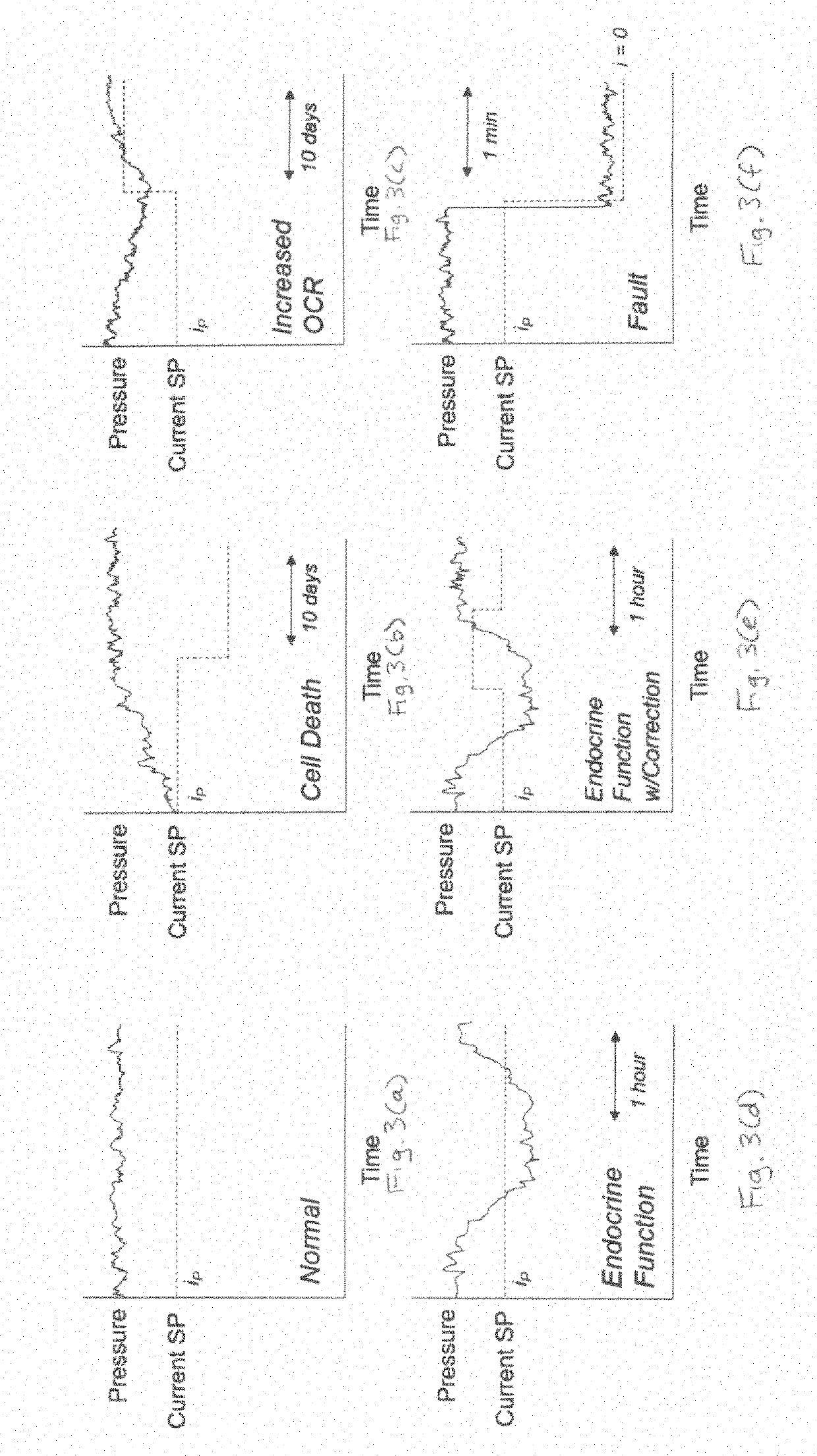System and method for controlling oxygen delivery to implanted cells
a technology for implanted cells and oxygen delivery, which is applied in the field of systems and methods for controlling oxygen delivery to cells, can solve the problems of encapsulated tissue essential gas delivery and waste gas removal, unable to achieve the anticipated benefits of approaches, and carries a risk of infection in percutaneous oxygen delivery
- Summary
- Abstract
- Description
- Claims
- Application Information
AI Technical Summary
Benefits of technology
Problems solved by technology
Method used
Image
Examples
first embodiment
[0062]Referring now to FIG. 1, there is shown a simplified schematic representation of a system for controlling oxygen delivery to a cell implant, the system being constructed according to the teachings of the present invention and being represented generally by reference numeral 11. Details of system 11 that are discussed elsewhere in this application or that are not critical to an understanding of the invention may be omitted from FIG. 1 or the accompanying description herein or may be shown in FIG. 1 and / or described herein in a simplified manner.
[0063]System 11 may comprise a cell capsule 13, a water electrolyzer 15, a pressure sensor 17, and a controller 19.
[0064]Cell capsule 13 may comprise a conventional cell capsule or container adapted to contain implanted cells and / or tissues or may comprise a similarly suitable cell capsule or container. For example, but without limitation, cell capsule 13 may comprise a cell capsule or container of the type disclosed in any one or more o...
second embodiment
[0083]Referring now to FIG. 5, there is shown a simplified schematic representation of a system for controlling oxygen delivery to a cell implant, the system being constructed according to the teachings of the present invention and being represented generally by reference numeral 111. Details of system 111 that are discussed elsewhere in this application or that are not critical to an understanding of the invention may be omitted from FIG. 5 and / or the accompanying description herein or may be shown in FIG. 5 and / or described herein in a simplified manner.
[0084]System 111 may comprise a cell capsule 113, a water electrolyzer 115, a pressure sensor 117, and a controller 119. Cell capsule 113 may be identical to cell capsule 13, water electrolyzer 115 may be identical to water electrolyzer 15, pressure sensor 117 may be identical to pressure sensor 17, and controller 119 may be identical to controller 19. Wire 33 may electrically couple electrolyzer 115 and controller 119, and wire 35...
third embodiment
[0087]Referring now to FIG. 6, there is shown a simplified schematic representation of a system for controlling oxygen delivery to a cell implant, the system being constructed according to the teachings of the present invention and being represented generally by reference numeral 211. Details of system 211 that are discussed elsewhere in this application or that are not critical to an understanding of the invention may be omitted from FIG. 6 and / or the accompanying description herein or may be shown in FIG. 6 and / or described herein in a simplified manner.
[0088]System 211 may be similar in many respects to system 111. One difference between the two systems may be that, whereas system 111 may comprise pressure sensor 117, which may have a single fluid port, system 211 may comprise a pressure sensor 217, which may have both a fluid inlet port and a fluid outlet port. Another difference between the two systems may be that, whereas system 111 may comprise tee-shaped tubing 121 fluidical...
PUM
| Property | Measurement | Unit |
|---|---|---|
| partial pressure | aaaaa | aaaaa |
| pressure | aaaaa | aaaaa |
| diameter | aaaaa | aaaaa |
Abstract
Description
Claims
Application Information
 Login to View More
Login to View More - R&D
- Intellectual Property
- Life Sciences
- Materials
- Tech Scout
- Unparalleled Data Quality
- Higher Quality Content
- 60% Fewer Hallucinations
Browse by: Latest US Patents, China's latest patents, Technical Efficacy Thesaurus, Application Domain, Technology Topic, Popular Technical Reports.
© 2025 PatSnap. All rights reserved.Legal|Privacy policy|Modern Slavery Act Transparency Statement|Sitemap|About US| Contact US: help@patsnap.com



